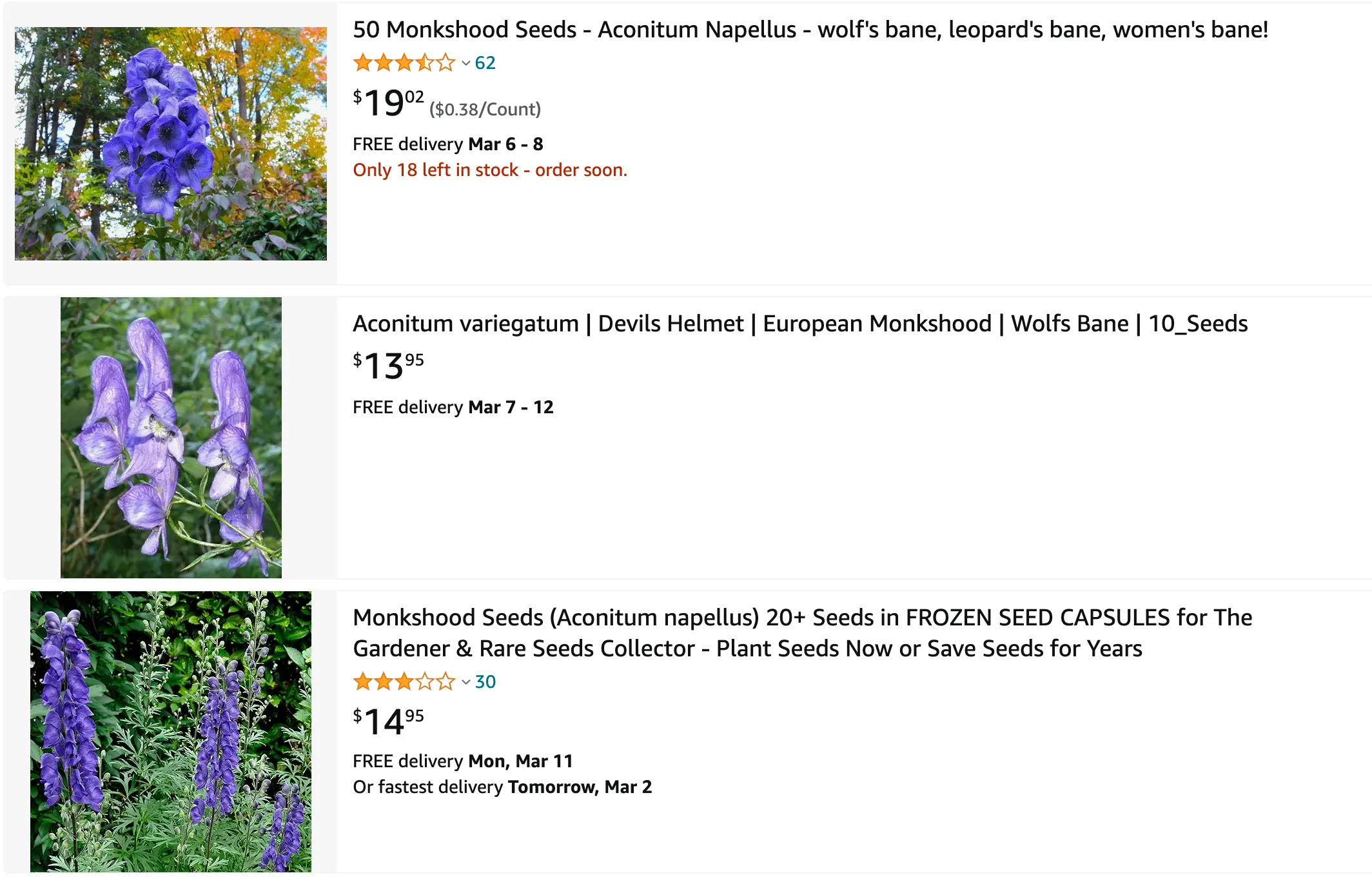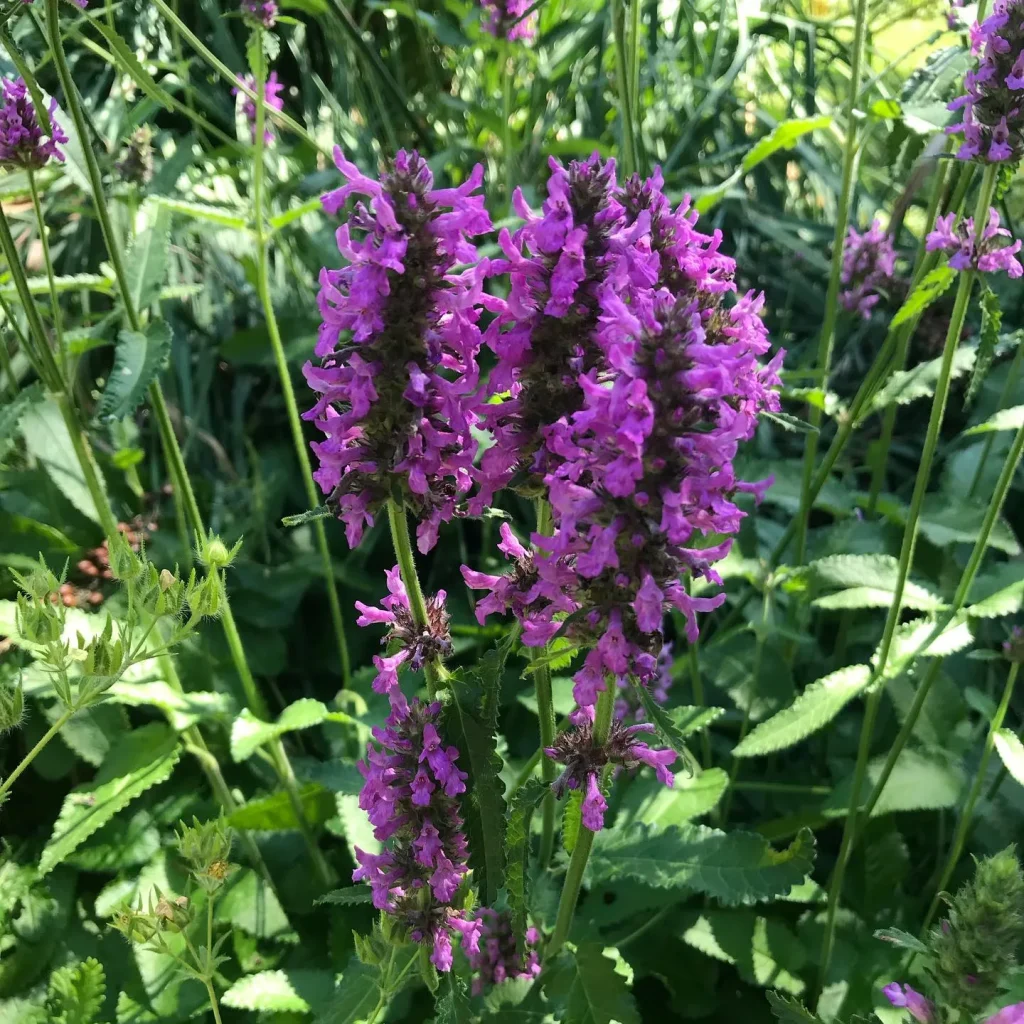
What is aconitum napellus?
Aconitum napellus, also known as monkshood or wolfsbane, is a flowering plant native to the mountainous regions of Europe and Asia. It’s a perennial herb with tall, upright stems and beautiful hooded flowers that can be blue, purple, or white.
369 Species in Genus Aconitum – Monkshood
Aconitum Napellus vs Aconite
When comparing Aconitum Napellus to general Aconite varieties, I’ve found that Aconitum Napellus tends to have a more striking, deep-blue flower, whereas other Aconites I’ve grown often come in a wider range of colors but lack the same dramatic impact.
Aconitum Napellus vs Aconitum Carmichaelii Arendsii
In my garden, Aconitum Napellus offers a bold, rich blue that’s hard to beat, but Aconitum Carmichaelii Arendsii provides a softer, lighter hue with a bit more height and a graceful presence that adds a different charm to the garden.
Is aconitum napellus poisonous?
Yes, Aconitum napellus is indeed poisonous. It contains toxic alkaloids that can be deadly if ingested. I’ve heard cautionary tales about its potent effects, which include symptoms such as vomiting, diarrhea, numbness, and even cardiac arrest. Handling the plant with bare hands can also pose risks, as the toxins can be absorbed through the skin. Because of its toxicity, I always handle monkshood with care and keep it out of reach of children and pets. It’s essential to respect its potency and treat it with caution in any gardening or landscaping endeavors.
What is aconitum napellus used for? What does aconitum napellus treat?
While aconitum napellus has a history of being used in traditional medicine, it’s important to remember that this use is discouraged today due to its high toxicity.
Here’s a breakdown:
- Traditionally: Aconitum napellus was used for various ailments like pain, fever, and inflammation.
- Modern medicine: Due to the risk of poisoning, aconitum napellus isn’t used in modern medicine. There are much safer and more effective options available for treating pain, fever, and inflammation.
If you’re interested in treating any health conditions, it’s always best to consult with a licensed medical professional. They can recommend safe and effective treatment options based on your specific needs.
Where to buy aconitum napellus?
Due to the dangers of aconitum napellus, it’s generally not recommended to purchase this plant. Many reputable nurseries and garden centers won’t even carry it.
Is aconite and aconitum napellus the same?
Yes, aconite is another common name for aconitum napellus.
Can horses have aconitum napellus?
No, aconitum napellus is poisonous to horses and other animals as well as humans.
How to successfully germinate aconitum napellus?
Germinating Aconitum napellus requires patience and attention to detail. I’ve found that starting with fresh seeds increases the likelihood of success. Before planting, I soak the seeds in water for about 24 hours to soften their tough outer shell. Then, I sow them in a well-draining potting mix, barely covering them with soil. Maintaining consistent moisture is crucial, so I mist the soil regularly to keep it damp but not waterlogged. Placing the pot in a warm, bright location, like a sunny windowsill, helps expedite germination. It’s a waiting game from there, but with the right conditions, I’ve been rewarded with delicate seedlings emerging within a few weeks.
If i die, water my plants!



